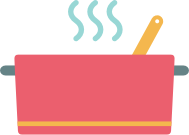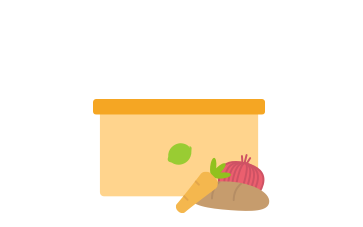Plan

11% of Australians say they think they make up to 100 decisions a day.

11% of Australians say they think they make up to 100 decisions a day.

32% of Australians admit they make too many decisions in their life.

32% of Australians admit they make too many decisions in their life.

42% of us would use time saved to exercise, while 33% would take up a hobby.

42% of us would use time saved to exercise, while 33% would take up a hobby.

Almost half of us find what to cook for dinner & budgeting for groceries the most stressful decisions made in a day.

Almost half of us find what to cook for dinner & budgeting for groceries the most stressful decisions made in a day.

37% of Aussies would find fresh ingredient & recipe boxes a huge stress reliever.

37% of Aussies would find fresh ingredient & recipe boxes a huge stress reliever.

31% of us admit we’d like a hand making daily decisions.

31% of us admit we’d like a hand making daily decisions.
Australians are more stressed than ever, but what’s the solution? HelloFresh
and psychologist Jaimie Bloch are here to help. With a few techniques and just three days,
you can detox from decision-making and start forming better habits.
Feeling run down, overwhelmed or foggy? Whether you’re looking to cleanse your mind from stress, take a break, or kick start your week feeling energised, balanced and clear, the 1-Day or 3-Day Decision Detox Programs are a great way to start a positive change. Both detox plans are self-directed, so you can do them in a way that fits your lifestyle.
Reduce Choices
Scrap the endless options! Give yourself no more than two choices for each meal.
Glucose Is Your Friend
Have a high glucose snack before making any decision to boost your brain.
Outsource Without The Guilt
Use services like meal kit boxes from HelloFresh. They have the meals planned out for you, recipes ready to go and the ingredients measured too!
Start Right
Don’t spend the morning getting bogged down by choice. Choose an outfit the night before and lay everything out.
Plan Ahead
Check what the weather will be the night before to plan outfits that are easy without being repetitive.
Be Mindful
Once dressed, don’t think about your outfit - shift your attention to a task that requires your mental energy. Distracted by your clothes? Try a quick and simple grounding exercise like the 5 Sense Check-in.
Describe 5 things you can see around you.
Name 4 things you can touch and touch them.
Name 3 things you can hear right now.
Name 2 things you can smell right now.
Name 1 thing you can taste in your mouth.
Make Your Morning Count
Research shows we have more brain power in the morning. Schedule meetings and make big decisions earlier in the day.
Use Time Limits
Build a schedule with 3-4 different types of work tasks spread out at different times in your work day. Use a timer or alarm to remind you of when you need to switch tasks or take a break.
Take A Break
Schedule in breaks throughout the day so they aren’t another decision to make. Take a 15-minute break every 75-90 minutes. Try getting a coffee or water, listening to music or calling someone for a chat.
What is Binary Decision Making
Create only two options to choose from to reduce mental strain in making the next decisions.
A Solution to Simple Decisions
Use this technique for more simple, yet draining tasks such as what we eat, what we wear and what task we start.
Start with Dinnertime
A simple way to test binary decision making in Day 2 is to isolate binary decisions to food related choices.

Embrace the Checklist
Bypass shortcuts and help conserve brain power with checklists. They serve as reminders for what needs to be done, without having to remember or to make any decisions.
Some Tips
Does the task rely on repetitive or trivial decisions: Then it’s perfect for a checklist. These are the types of tasks that would benefit from a checklist.
Unsure where to start: Use the common mistakes you make as the first items on your checklist.
Simple steps: The simpler the steps are in your checklist, the easier and smoother a task can be carried out.
Create subheadings: These subheadings could be divided into daily or weekly subheadings such as emails, household and social tasks.
Test the checklist: Test out the checklist, most of the time you will find the gaps you are missing once you put it into practice.
Write lists in the morning: We have increased brainpower in the first two hours of waking up, so write your lists then.
Be Flexible
Create a routine or checklist for your morning, but don’t stress the small stuff. It is also ok to adapt your routine. Life changes, therefore your routine can change too.
Have a Reminder
Have a defined trigger that prompts and reminds you to move into your routine e.g. your morning alarm or walking through the door at night.
Create Clear and Defined Steps
Being clear with your steps and process for your routine will help make things flow easily, conserving energy for more important decisions during the day.
Reward Yourself
It is important to feel like you are working towards something. Set up a reward at the end of your routine e.g. a coffee or juice in the morning, an hour of telly or a delicious dessert after dinner.
Schedule Breaks
Mental fatigue sets in if we have to make constant decisions in a row, so use the Pomodro Technique. This technique breaks work up into sprints, with breaks in between to keep up productivity and conserve brainpower.
Glucose
Multiple research studies have shown that food high in glucose eaten before decision-making tasks, improves speed and efficiency of decision-making.
Stick to It
It is important to stick to the routine for the first 60 days, as it takes that long to form habit. Once a routine becomes habit, you will perform the task on autopilot, allowing mental space for other more important decisions.
Day 1 - Cleanse
Reduce Choices
Scrap the endless options! Give yourself no more than two choices for each meal.
Glucose Is Your Friend
Have a high glucose snack before making any decision to boost your brain.
Outsource Without The Guilt
Use services like meal kit boxes from HelloFresh. They have the meals planned out for you, recipes ready to go and the ingredients measured too!
Start Right
Don’t spend the morning getting bogged down by choice. Choose an outfit the night before and lay everything out.
Plan Ahead
Check what the weather will be the night before to plan outfits that are easy without being repetitive.
Be Mindful
Once dressed, don’t think about your outfit - shift your attention to a task that requires your mental energy. Distracted by your clothes? Try a quick and simple grounding exercise like the 5 Sense Check-in.
Describe 5 things you can see around you.
Name 4 things you can touch and touch them.
Name 3 things you can hear right now.
Name 2 things you can smell right now.
Name 1 thing you can taste in your mouth.
Make Your Morning Count
Research shows we have more brain power in the morning. Schedule meetings and make big decisions earlier in the day.
Use Time Limits
Build a schedule with 3-4 different types of work tasks spread out at different times in your work day. Use a timer or alarm to remind you of when you need to switch tasks or take a break.
Take A Break
Schedule in breaks throughout the day so they aren’t another decision to make. Take a 15-minute break every 75-90 minutes. Try getting a coffee or water, listening to music or calling someone for a chat.
Day 2 - Building a Process
What is Binary Decision Making
Create only two options to choose from to reduce mental strain in making the next decisions.
A Solution to Simple Decisions
Use this technique for more simple, yet draining tasks such as what we eat, what we wear and what task we start.
Start with Dinnertime
A simple way to test binary decision making in Day 2 is to isolate binary decisions to food related choices.


Embrace the Checklist
Bypass shortcuts and help conserve brain power with checklists. They serve as reminders for what needs to be done, without having to remember or to make any decisions.
Some Tips
Does the task rely on repetitive or trivial decisions: Then it’s perfect for a checklist. These are the types of tasks that would benefit from a checklist.
Unsure where to start: Use the common mistakes you make as the first items on your checklist.
Simple steps: The simpler the steps are in your checklist, the easier and smoother a task can be carried out.
Create subheadings: These subheadings could be divided into daily or weekly subheadings such as emails, household and social tasks.
Test the checklist: Test out the checklist, most of the time you will find the gaps you are missing once you put it into practice.
Write lists in the morning: We have increased brainpower in the first two hours of waking up, so write your lists then.
Day 3 - Creating a Routine
Be Flexible
Create a routine or checklist for your morning, but don’t stress the small stuff. It is also ok to adapt your routine. Life changes, therefore your routine can change too.
Have a Reminder
Have a defined trigger that prompts and reminds you to move into your routine e.g. your morning alarm or walking through the door at night.
Create Clear and Defined Steps
Being clear with your steps and process for your routine will help make things flow easily, conserving energy for more important decisions during the day.
Reward Yourself
It is important to feel like you are working towards something. Set up a reward at the end of your routine e.g. a coffee or juice in the morning, an hour of telly or a delicious dessert after dinner.
Schedule Breaks
Mental fatigue sets in if we have to make constant decisions in a row, so use the Pomodro Technique. This technique breaks work up into sprints, with breaks in between to keep up productivity and conserve brainpower.
Glucose
Multiple research studies have shown that food high in glucose eaten before decision-making tasks, improves speed and efficiency of decision-making.
Stick to It
It is important to stick to the routine for the first 60 days, as it takes that long to form habit. Once a routine becomes habit, you will perform the task on autopilot, allowing mental space for other more important decisions.